Beyond the Blueprint: A Deep Dive into the World of the Crankshaft Manufacturer
Have you ever stopped to think about the sheer complexity hidden within the engine of your car, or the massive power plant generating electricity for your home? At the very heart of these incredible machines lies a component that’s often overlooked but absolutely critical: the crankshaft. It’s the unsung hero, converting the linear motion of pistons into rotational energy that drives everything from wheels to turbines. And behind every robust, reliable engine is a specialized entity: the crankshaft manufacturer.
To be honest, the role of a top-tier crankshaft manufacturer goes far beyond simply shaping metal. It involves an intricate blend of metallurgy, precision engineering, advanced technology, and a relentless commitment to quality. In this comprehensive exploration, we’ll peel back the layers to understand what it truly takes to be a leader in this vital industry, from the initial design concepts to the final, meticulously balanced product.
The Unsung Hero: Why the Crankshaft Manufacturer is Critical
Frankly speaking, without a perfectly engineered crankshaft, an internal combustion engine simply wouldn't function. This component endures immense stress, high temperatures, and constant rotational forces. It’s responsible for transmitting the power generated by combustion to the drivetrain. Any flaw, no matter how minor, can lead to catastrophic engine failure, costly repairs, and significant safety risks. This is precisely why the choice of a crankshaft manufacturer is paramount, whether you're building a high-performance racing engine, a heavy-duty industrial machine, or a standard passenger vehicle.
In my experience, the demands placed on a crankshaft are truly extraordinary. It must withstand millions of cycles of stress, maintain precise dimensions under varying thermal conditions, and possess exceptional fatigue strength. This isn't just about making a part; it's about crafting the very pulse of an engine. The reputation of an engine builder, or even an entire automotive brand, can hinge on the quality and reliability of the crankshafts they source. It's worth noting that this component is often one of the most expensive single parts in an engine, underscoring its importance and the investment in its integrity.
From Raw Material to Refined Power: The Art of Crankshaft Manufacturing
The journey of a crankshaft from raw material to a finished, high-precision component is a fascinating one, demonstrating why precision crankshaft production is a highly specialized field. It typically begins with carefully selected high-strength steel alloys, chosen for their specific metallurgical properties.
Forging and Casting: The Foundation
The initial shaping of a crankshaft often involves either forging or casting.
- Forging: This method involves heating a steel billet and shaping it under immense pressure using dies. Forging aligns the grain structure of the metal, resulting in superior strength, fatigue resistance, and ductility. Many experts agree that for critical applications like high-performance engines, forged crankshafts are the preferred choice due to their inherent strength.
- Casting: In this process, molten metal is poured into a mold. While generally more cost-effective and suitable for high-volume production of less demanding applications, cast crankshafts typically have lower strength compared to forged ones due to their less refined grain structure.
After the initial shaping, the crankshaft is still a rough component. This is where the true artistry and technological prowess of a crankshaft manufacturer come into play.
Precision Machining: The Heart of Accuracy
Once forged or cast, the crankshaft undergoes extensive machining. This stage is absolutely critical for achieving the incredibly tight tolerances required for engine operation.
- Rough Machining: Initial cuts remove excess material and bring the crankshaft closer to its final shape.
- Grinding: This is where the precision truly comes in. Specialized grinding machines meticulously shape the main journals (where the crankshaft rotates in the engine block) and the rod journals (where the connecting rods attach). The surface finish and roundness here are paramount to minimizing friction and ensuring long bearing life.
- Drilling and Tapping: Oil passages are drilled through the crankshaft to ensure proper lubrication of the bearings. These passages must be precisely angled and sized.
- Balancing: Given the high rotational speeds and the need for smooth engine operation, crankshafts must be dynamically balanced to an extremely fine degree. Any imbalance can lead to vibrations, premature wear, and noise. This often involves removing small amounts of material from specific areas or adding balance weights.
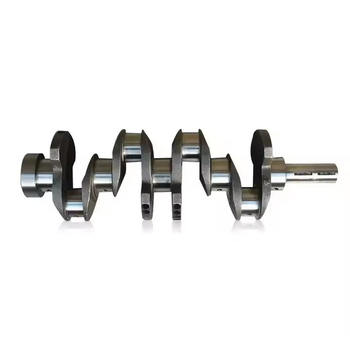
Heat Treatment and Surface Finishing: Enhancing Durability
After machining, crankshafts often undergo various heat treatment processes to enhance their strength, hardness, and wear resistance. These can include:
- Nitriding: A surface hardening process that introduces nitrogen into the surface of the steel, creating a very hard, wear-resistant layer.
- Fillet Rolling: This process cold-works the fillets (the curved transitions between the journals and the webs), improving fatigue strength by inducing compressive residual stresses.
- Polishing: The final step to achieve an ultra-smooth surface finish on the journals, further reducing friction and extending bearing life.
What Sets Apart a Leading Crankshaft Manufacturer?
It's not just about having the machinery; it's about the expertise, the processes, and the commitment that define a truly leading crankshaft manufacturer.
Unwavering Quality Control
Quality control is non-negotiable. From raw material inspection to in-process checks at every stage of machining and heat treatment, and finally, a rigorous final inspection, every step is scrutinized. This includes:
- Dimensional Metrology: Using advanced CMM (Coordinate Measuring Machine) systems to verify every dimension to micron-level accuracy.
- Non-Destructive Testing (NDT): Techniques like magnetic particle inspection or ultrasonic testing to detect internal flaws or surface cracks that are invisible to the naked eye.
- Material Analysis: Ensuring the chemical composition and mechanical properties of the steel meet specifications.
Research and Development (R&D)
The best manufacturers don't just produce; they innovate. They invest heavily in R&D to explore new materials, advanced manufacturing techniques (like additive manufacturing for prototypes or specialized designs), and improved heat treatment processes. This continuous pursuit of excellence ensures they remain at the forefront of the industry, capable of meeting evolving engine demands, from lightweight designs for electric vehicle range extenders to ultra-durable components for heavy-duty industrial applications.
Customization and Engineering Support
Many engine builders require custom crankshaft designs tailored to their specific performance goals or space constraints. A top crankshaft manufacturer offers robust engineering support, working collaboratively with clients from the design phase through to production, providing expertise in material selection, design optimization, and performance simulation. This is particularly true for specialized applications where standard off-the-shelf solutions simply won't suffice.
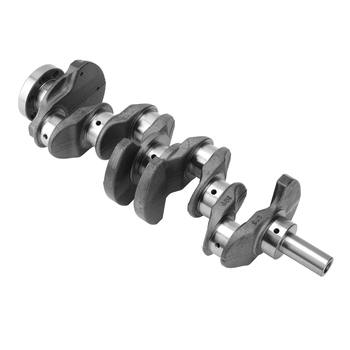
Navigating Challenges and Embracing Innovation in Crankshaft Production
The world of crankshaft manufacturing is not without its challenges. The push for higher power density, stricter emissions regulations, and improved fuel efficiency means crankshafts must become lighter, stronger, and more durable, all while maintaining cost-effectiveness. This is where innovation truly shines.
Material Science Advancements
Interestingly enough, material science plays a huge role. Manufacturers are constantly exploring new steel alloys with enhanced properties, such as higher fatigue strength or better resistance to wear at elevated temperatures. Some are even experimenting with composite materials for specialized, lightweight applications, though steel remains the dominant material for the vast majority of crankshafts.
Automation and Digitalization
The adoption of advanced automation, robotics, and digital twin technology is transforming the manufacturing floor. These technologies not only improve precision and consistency but also increase efficiency and reduce human error. Predictive maintenance, powered by AI and machine learning, ensures that machinery operates optimally, minimizing downtime and maximizing output for automotive crankshaft suppliers and industrial producers alike.
Sustainability in Manufacturing
With growing environmental concerns, manufacturers are also focusing on sustainable practices. This includes optimizing energy consumption, reducing waste, recycling materials, and exploring more environmentally friendly machining fluids and processes. A responsible crankshaft manufacturer considers their ecological footprint as part of their overall operational excellence.
Choosing Your Partner: Selecting the Right Crankshaft Manufacturer
So, how do you go about selecting the ideal crankshaft manufacturer for your project or production needs? It's a decision that requires careful consideration.
Experience and Reputation
Look for a manufacturer with a proven track record. How long have they been in business? What kind of clients do they serve? Do they have a strong reputation for reliability and quality in the industry? Many experts agree that longevity and a diverse client portfolio are strong indicators of a manufacturer's capability and trustworthiness.
Certifications and Compliance
Ensure they hold relevant industry certifications (e.g., ISO 9001, IATF 16949 for automotive). These certifications indicate adherence to rigorous quality management systems. Compliance with industry standards and regulations is also crucial, especially for applications like industrial engine crankshafts where safety and performance standards are exceptionally high.
Technological Capabilities
Assess their manufacturing equipment and technological prowess. Do they use state-of-the-art CNC machines, advanced heat treatment facilities, and sophisticated inspection equipment? Their investment in technology directly correlates with their ability to produce high-precision components.
Customer Service and Support
A good manufacturer isn't just a supplier; they're a partner. Evaluate their responsiveness, willingness to provide technical support, and ability to meet deadlines. Effective communication and a collaborative approach are vital for successful long-term relationships. I've found that companies that prioritize customer engagement often deliver superior results.
The Road Ahead: Future Trends for the Crankshaft Manufacturer
The landscape of power generation is constantly evolving, and the crankshaft manufacturer must evolve with it. While electric vehicles are gaining traction, internal combustion engines will remain vital for many years to come, especially in heavy-duty transport, industrial machinery, marine applications, and power generation.
Future trends will likely include:
- Continued Optimization: Pushing the boundaries of material strength and lightweight design to maximize efficiency and reduce emissions in hybrid and conventional powertrains.
- Adaptation to New Fuels: As engines adapt to alternative fuels like hydrogen or synthetic fuels, crankshafts may need to withstand different combustion characteristics and operating environments.
- Smart Manufacturing: Further integration of AI, IoT, and big data analytics into the manufacturing process for predictive quality control and optimized production flows.
- Global Supply Chain Resilience: Manufacturers will continue to build more robust and diversified supply chains to mitigate risks and ensure continuous production.
In conclusion, the role of the crankshaft manufacturer is far more complex and critical than it might appear on the surface. They are the silent architects of power, meticulously crafting the components that enable our world to move, generate energy, and perform countless essential tasks. Their dedication to precision, quality, and innovation ensures that the heart of engines continues to beat reliably and efficiently, driving progress across industries.
For more detailed information, please visit our official website:crankshaft manufacturer
About the author: Dr. Alistair Finch is a seasoned mechanical engineer with over two decades of experience in powertrain design and manufacturing. Specializing in high-precision components, he has consulted for leading automotive and industrial engine manufacturers worldwide. His expertise encompasses advanced materials, manufacturing processes, and quality assurance for critical engine parts. Dr. Finch is passionate about the intricate mechanics that drive modern machinery and frequently shares insights on engineering excellence.
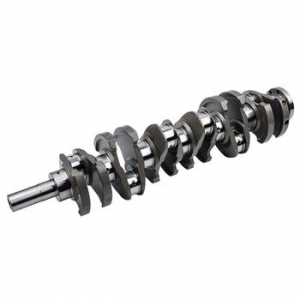 The Unseen Powerhouse: Unravel
The Unseen Powerhouse: Unravel
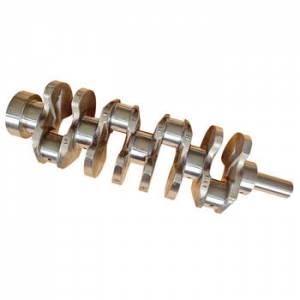 Unlocking Performance: How to
Unlocking Performance: How to
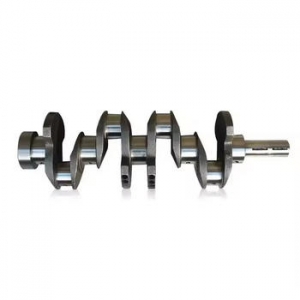 Beyond the Blueprint: A Deep D
Beyond the Blueprint: A Deep D
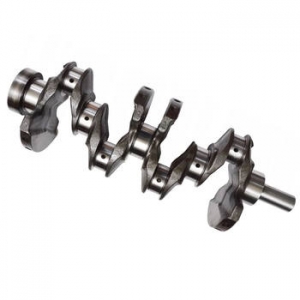 Crankshaft manufacturer
Crankshaft manufacturer
